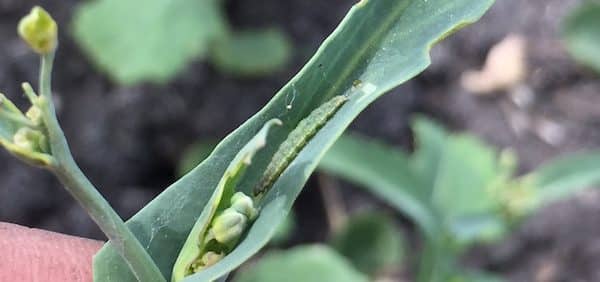Diamondback moth larvae. While some are reporting higher numbers this year, it takes 100-150 larvae per square metre in immature to flowering plants or 200-300 per square metre in plants with flowers and pods to cause enough damage to warrant a spray. Natural controls, including beneficial insects, tend to keep numbers below thresholds. Thresholds are not based on sweep net counts, but some are finding them in sweep nets. Alberta Agriculture entomologist Scott Meers says: “Don’t get too excited if picking up 10-12 diamondback larvae per 10 sweeps.” Scouting tips.
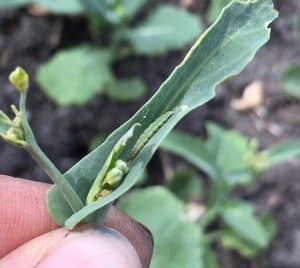
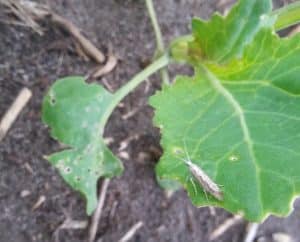
Cabbage seedpod weevil. Numbers seem to be lower this year in traditional hot spots, but as the area expands, some growers are seeing higher numbers for the first time. Fields around Southey, Saskatchewan, for example, are reported to have counts of 4 per sweep. This is at threshold levels, but be sure to use proper scouting technique and don’t rely on only a few sweeps near the field edge. Scouting tips, spray timing and photos.
Lygus. Under good growing conditions, lygus do not impact yield if present in a flowering canola field. Pod set is the risk period. Even then, if growing conditions are good spraying with fewer than 50 per 10 sweeps may not pay. Surveys from southern Alberta suggest lower numbers so far this year. Read more on lygus management considerations.
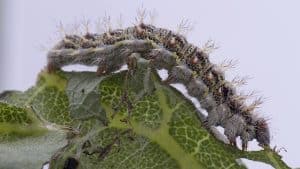
Painted lady butterfly. The spiky caterpillars are in southern Alberta chewing on canola, but Scott Meers doesn’t suspect they’re at economic levels. He says they’re eating more soybeans – with some fields in southern Alberta losing whole plants. Thresholds for soybeans, according to U.S. information, is 20-25% defoliation. They’ll eat sunflowers, too. Another name for them is “thistle caterpillar” and while they generally prefer thistles, if thistles are not available, their next favourite seems to be soybeans, Meers says.
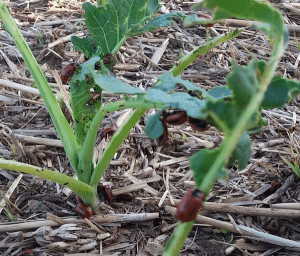
Red turnip beetle. Meers suspects areas with unharvested crop may have had more this year because of early season volunteer canola that couldn’t get sprayed out. This boosted larvae feeding, which led to higher adult numbers. Read more.
Bertha armyworm. Adult moth traps are out, which can provide a forewarning of worm levels and locations. So far numbers are low. Manitoba trap counts. Alberta. Saskatchewan.
Grasshoppers. Dry conditions in parts of Western Canada may mean that grasshoppers could be an insect to watch out for. Thresholds.

